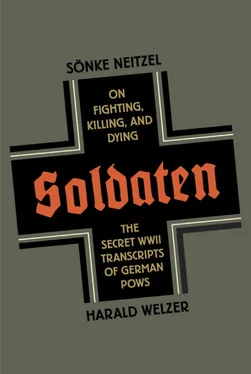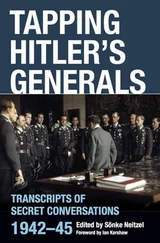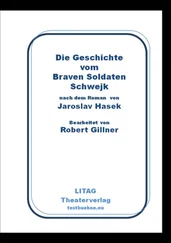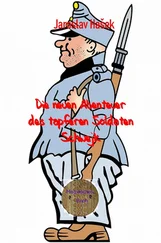A hunt consists of locating, pursuing, felling, and eviscerating game. Hunts come in various forms. The most common ones are the hunt in which a solitary rifle wielder goes after his prey together with a game dog, and the roundup, in which beaters drive the prey into the hunter’s sights. Hunting has a sporting aspect. The hunter has to be skillful and alert, smarter than his prey. He has to know how to hide, how to attack without being spotted, and how to shoot well. But hunting also entails special rules. One hunts only at particular times, for instance, and only shoots at individual animals.
Taken together, all these elements correspond to the demands placed upon a fighter pilot. (Indeed, the German for fighter pilot, Jagdflieger, contains the word for hunt Jagd .) This is why German fighter pilots understood what they did in the context of hunting. It was considered dishonorable, for instance, to fire upon enemy pilots who had ejected from their planes and were parachuting back to ground, even though these men were technically still enemies. {116} 116 There were in fact cases on all war fronts of pilots being killed while parachuting to the ground. They were particularly frequent in the last phase of aerial warfare over Germany. American fighter pilots killed at least one hundred of their German counterparts in this fashion. Klaus Schmider, “The Last of the First: Veterans of the Jagdwaffe Tell Their Story,” Journal of Military History 73 (2009), pp. 246–50. See also SRA 450, 4 September 1940, TNA, WO 208/4119; SRA 5460, 16 July 1944, TNA, WO 208/4134.
Luftwaffe General Adolf Galland supposedly once deemed it “unworthy of a huntsman” to bombard groups of American bombers. The hunt is the source of the “fun” of which Luftwaffe POWs constantly spoke. The only other military men who talked about battle in such sporting terms were U-boat crews.
A good example of this trope is a metaphor used by German navy Lieutenant Wolf-Doetrich Danckworth, the only survivor from the German submarine U-224:
It’s still good fun today. When we were after a convoy it was always like a wolf after a flock of sheep, strongly guarded by dogs. Dogs are the corvettes and the sheep are the ships and we were lurking round like wolves until we found a way of slipping in, then we attacked, fired our torpedoes and got out again. The best fun is to hunt. {117} 117 SRX 1657, 17 March 1943, TNA, WO 208/4162.
For soldiers, it made no difference whether the prey consisted of military or civilian targets. In his diary, an enthusiastic Ernst Jünger described how he finally, after two and a half years of war, succeeded in “felling” his first Englishman with a “precise” shot. {118} 118 Ernst Jünger, Kriegstagebuch, 1914–1918, Helmuth Kiesel, ed. (Stuttgart: Klett-Cotta, 2010), p. 222.
Soldiers’ anecdotes were less concerned with who was killed and why than with the more spectacular results one had achieved. This, too, is an instance of how soldiers saw battle in terms of sports.
The more prominent or important the target, the greater the triumph, and the more interesting the stories that could be told about the kill:
DOCK: I usually took two photos of the same object; the ops. people always kept one. My best pictures were of a Whitley, the first enemy aircraft shot down by the Staffel. How we celebrated our first victory! Until half-past five the next morning; and we had a sortie at seven. We all got into the aircraft as tight as lords! The Whitley was the first our Staffel shot down, then came nothing but four-engined aircraft, Liberators, Hellfires, Stirlings, Sunderlands. Then came Lockheed-Hudsons and so on. We shot down four civil aircraft.
HEIL: Were they armed?
DOCK: No.
HEIL: Why did you shoot them down?
DOCK: Whatever crossed our path was shot down. Once we shot down—there were all sorts of bigwigs in it: seventeen people, a crew of four and fourteen passengers; they came from LONDON. There was a famous English film-star in it too, HOWARD. The English radio announced it in the evening. Those civil aircraft pilots know something about flying! We stood the aircraft on its head, with the fourteen passengers. They must all have hung on the ceiling! (Laughs.) It flew at about 3200 m. Such a silly dog, instead of flying straight ahead when he saw us, he started to take evasive action. Then we got him. Then we let him have it all right! He wanted to get away from us by putting on speed. Then he started to bank. Then first one of us was after him, and then another. All we had to do was to press the button, quietly and calmly. (Laughs.)
HEIL: Did it crash?
DOCK: Of course it did.
HEIL: And did any of them get out?
DOCK: No. They were all dead. Those fools don’t try to make a forced landing, even if they can see that it’s all up with them. {119} 119 SRA 4212, 17 July 1943, TNA, WO 208/4130.
Dock’s anecdote about shooting down the Douglas DC-3 transport airplane carrying the actor Leslie Howard particularly underscores the sporting aspect of the frame of reference of war. His victims are big game. Dock clearly expresses his admiration for the pilot of the Douglas, who tried to avoid being shot down with a spectacular evasive maneuver. But the pilot had no chance against a fighter plane. All Dock and his comrades had to do, as he puts it, was “to press the button, quietly and calmly.” {120} 120 For background on the activities of German destroyers in the Bay of Biscay, which led to the death of Leslie Howard on 1 June 1943, see Neitzel, Einsatz der deutschen Luftwaffe, pp. 193–203.
Such anecdotes once again show that most soldiers did not distinguish between military and civilian targets. The point was to sink ships, shoot down planes, and destroy targets—who was killed was simply not very important. Occasionally, POWs even emphasized that their targets were not military ones. For example, in January 1945, First Lieutenant Hans Harting from the Luftwaffe’s Fighter Wing 26 related:
HARTING: I myself flew to Southern ENGLAND. In 1943 we flew over hourly in “Schwarm” formation, and we were ordered to fire at everything, except military targets. We killed children and women with prams. {121} 121 SRX 2080, 7 January 1945, TNA, WO 208/4164.
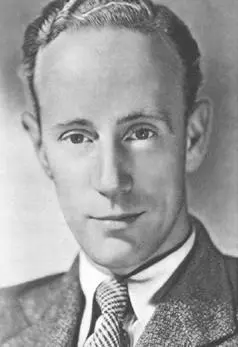
The film actor Leslie Howard (1893–1943) played Ashley Wilkes in Gone With the Wind. He was killed on June 1, 1943, while on board KLM Flight 777 from Lisbon to Bristol, which was shot down over the Bay of Biscay by a Junkers 88 fighter plane. (Photographer unknown; Ullstein Bilderdienst)
A conversation between bomber pilot Wille* and submarine corporal Solm provides an especially drastic example of what conscious attacks on nonmilitary targets meant:
SOLM: We sank a children’s transport.
WILLE: You or PRIEN?
SOLM: We did it.
WILLE: Were they drowned?
SOLM: Yes, all are dead.
WILLE: How big was she?
SOLM: 6,000 (??) tons.
WILLE: How did you know that?
SOLM: Through W/T; the B.D.U. (U-Boat commander) sent through “there is a convoy at such and such a place, so and so many ships with supplies, so and so many ships with this or that cargo, a children’s transport, etc., etc. The children’s transport is so big, and the other is so big.” Whereupon we attacked it. Then came the question “Did you attack the convoy?” We replied “Yes.”
WILLE: How did you know that just this ship out of the 50 had the children on board?
SOLM: Because we have a big book. This book contains all the ships of the English and Canadian steamship lines. We look them up in that.
Читать дальше
